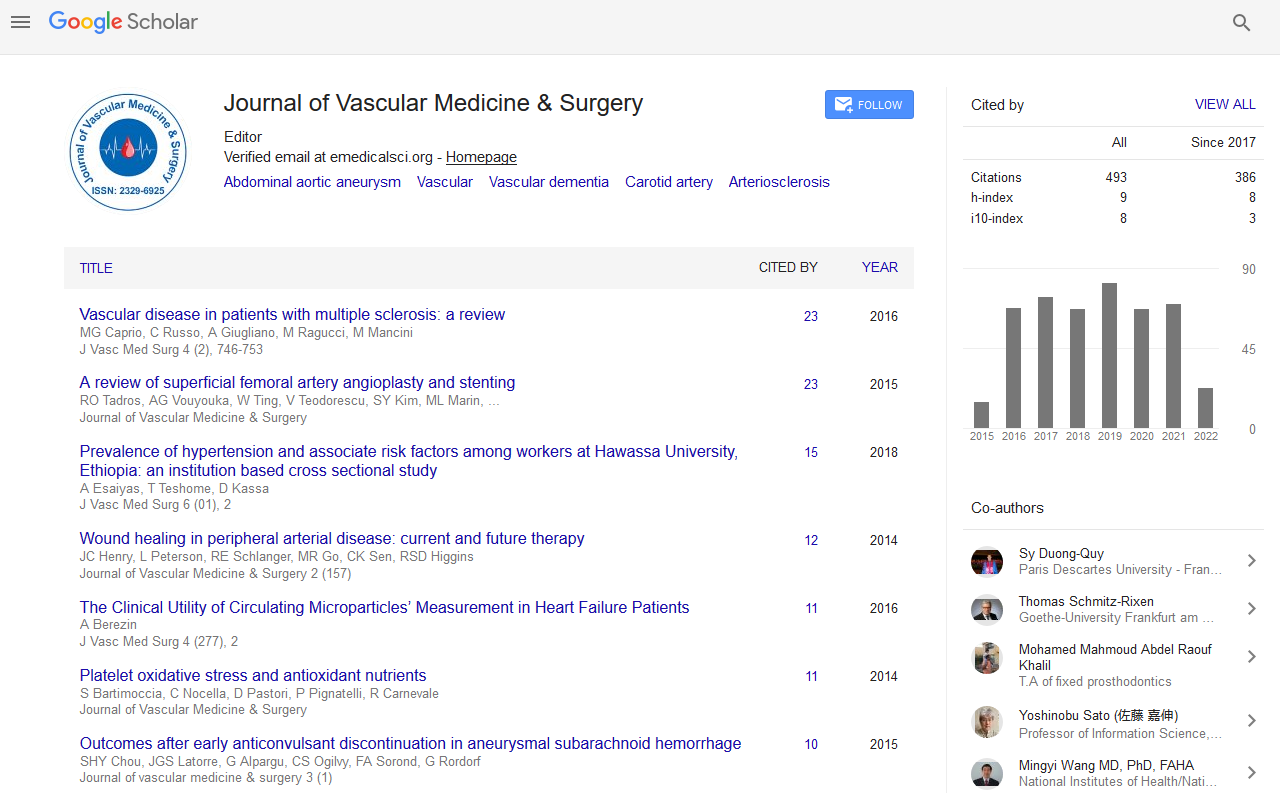Indexed In
- Open J Gate
- Academic Keys
- RefSeek
- Hamdard University
- EBSCO A-Z
- OCLC- WorldCat
- Publons
- Euro Pub
- Google Scholar
Useful Links
Share This Page
Journal Flyer

Open Access Journals
- Agri and Aquaculture
- Biochemistry
- Bioinformatics & Systems Biology
- Business & Management
- Chemistry
- Clinical Sciences
- Engineering
- Food & Nutrition
- General Science
- Genetics & Molecular Biology
- Immunology & Microbiology
- Medical Sciences
- Neuroscience & Psychology
- Nursing & Health Care
- Pharmaceutical Sciences
Abstract
Aberrant Ulnar Artery and Ulnar Artery Thrombosis with Nerve Entrapment: A Case Report and Review of Literature
Nickul N Shah MS-IV, David Roman RPAC and Roland Purcell MD
Ulnar artery aneurysms are quite rare discoveries, related to repetitive trauma, vasculitis, anatomic abnormalities, or infections. Typically caused by blunt injury to the ulnar artery and superficial palmar arch, arterial wall damage leads to the formation of an aneurysm. The sensory branch of the ulnar nerve becomes compressed, causing paraesthesia and weakness along the 4th and 5th digits, and resection is required. It is interesting to note, in this particular case, that a high origin and superficial ulnar artery coursed along the forearm and entered along the ulnar side of the hand. A diagnostic and therapeutic approach is necessary to relieve ulnar nerve entrapment. In addition, it is important to establish an early diagnosis prior to any surgical procedures in order to isolate and establish continuous flow to the compromised region. Further studies are required, however, to establish an evidenced-based approach to such anatomic variations with surgical repair.


